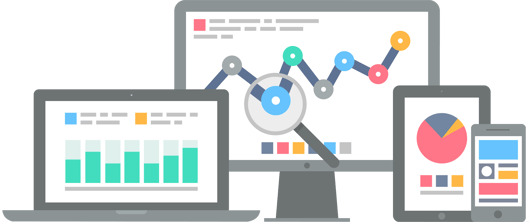The biggest change in people analytics that surprised me in 2017 wasn't any new leap in technology or shiny new object. For me, it was the growth in interest and uptake by smaller organizations.
Traditionally this space has been reserved for companies that had statistically significant populations and budget's to match them. They could hire a team to build and grow HR analytics and had discretionary budget to spend on tool-sets to assist them. A few years ago you rarely would have seen a company with less than 5,000 employees spending resources on these initiatives. The last couple years and this year in particular however we've seen a substantial increase in appetite from companies with less than 1,000 employees.
In fact, the smallest company I spoke to in 2017 was barely over 100 employees.
These companies are not just kicking tires either, they are purchasing technology, hiring people analysts, and making out sized gains in capability when compared to their larger peers. Budget is being procured and goals are being set that would shame many large organizations. Did you know that 35% of our new customers in 2017 came from organizations with less than 1000 employees.
What are they doing?
Basically the same activities as larger organizations. They are gathering and making sense of all their people data, delivering reporting/analytics to their business users, and moving into advanced analytics across the hire to retire spectrum. Goals are lofty, and without a significant organizational burden they are able to move fast. Time from analysis to decision to action is on the order of days if not hours.
System complexity is a major challenge.
Smaller companies still struggle with the same challenges however, often the system complexity is the same or sometimes more complex than larger organizations. We have observed that often smaller companies have collected a number of systems to help make life easier but generally they're sourced from a rainbow of vendors and often are the bright new shiny applications that don't have the maturity to provide the level of data detail and access that a more established vendor may provide. At this size it is also much easier to transition to a different product or spin up a new technology which while collecting some great data can make life much more difficult to merge these systems together for analysis. Overall i think many organizations at this scale have much richer data than many of their larger peers but it is more fragmented.
How can you possibly find statistical significance with a small population?
From my conversations with these companies this is a known factor in how they conduct analysis and interpret their findings. It's not a showstopper but just another data point to be kept in mind. We personally had to adapt some of our machine learning prediction functionality to be able to cater for smaller companies. A predictive attrition model for example generally works better the more terminations you have, with a small population of terminations you typically won't do so well.
"For smaller organizations we now employ a method of synthetically creating data that is not the same as, but is representative of the original data set - essentially making a 500 person company look like it's a 50,000 person company."
One Model has had great success in employing this to very large enterprises as well to enhance the behaviors and patterns seen in the data. There are options to overcome the smaller data set challenges. Most people we know in this space don't care that they only have 500 people, because our software allows us to deliver value to their organization irregardless.

Is it a passing fad for smaller organizations?
I don't know yet, but I don't think so. We have to keep in mind the number of smaller organizations is orders of magnitude larger than larger organizations and it really is only the most forward thinking of these companies that are undertaking these activitites. Typically (but not always) it's the companies that are growing, doing well, and apt to hiring people who are interested in using data to support decisions (think technology, and bio-tech). This is not every smaller company, but my belief is that the entry point for HR analytics is becoming earlier, and earlier in an organization's growth curve.
What does it mean for us in larger organizations and the space in general?
- Increased demand for HR analytics skillsets from smaller companies (more choice in who you work for).
- Conversely, if you need to hire for your people analytics practice don't discount people who have worked for smaller companies - you may find some great candidates in this pool.
- Any human capital competitive advantage you have in being a larger company is being assumed by your smaller competitors.
- An increase in the number of vendors supplying technology in the space, small companies are typically the entry point for new startups.
- With availability of technology targeted at the systems smaller companies use, expect the adoption rate and therefore the effects of the first two points to increase.
- We're going to see different examples for the use of people analytics at smaller scale companies, these will be interesting and learnings may even apply to smaller business units within large organizations.
We're giving away free 30-min consultations to help companies take charge of their HR people analytics and data in 2018.
Would like like to learn how we can help you take your people analytics and workforce data to the next level?
Take advantage! Click here, or click on button below to schedule a complimentary consultation.
One of our team members will get in touch with you and speak with you one-on-one to address any specific challenges your company might have.
Cheers to a new year,
Chris Butler
One Model, CEO

